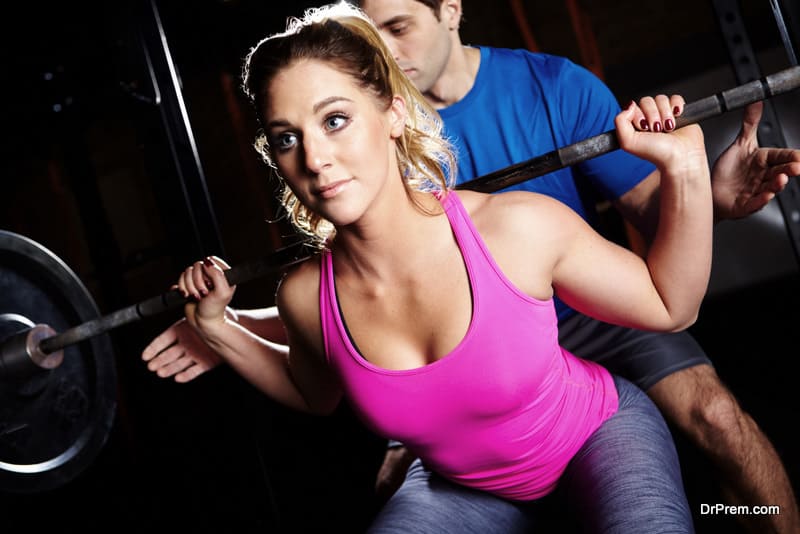Weight lifting has long been seen as a sport defined by brute strength alone. However, for competitive severe lifters, there is an art to the sport that transcends mere physical power. Beneath the surface of ripped muscles and thunderous lifts lies an intricate technique hard-won through thousands of hours spent perfecting even the slightest motions.
In this article, we aim to provide readers with a glimpse into the nuanced strategies, meticulous preparations, and cultivated physical mastery that characterize the work of world-class weightlifters. Far from a simplistic display of might, the competitive sport demands an almost delicate synchronization of body and bar that can make the difference between achieving personal bests and falling short of goals.
Developing Proper Form: The Foundation for Lifting Heavy Weights Safely and Efficiently
The cornerstone of weight lifting technique is developing and maintaining proper form. It includes everything from foot position, grip strength, and stance to hand positioning, breathing, and concentration. For example, professional lifters spend countless hours perfecting their grip strength alone, often experimenting with various chalk, weights, and support gear to find the optimal balance for their specific body type and goals.
In addition, a lifter’s stance and positioning are crucial factors for achieving maximum efficiency in movements such as the snatch and clean & jerk. Proper foot placement and balance can significantly impact the bar’s trajectory and ultimately determine whether or not a lift is successful. Furthermore, maintaining adequate breathing techniques throughout each lift is essential for safety and performance. Dianabol UK can help you build muscles and gain strength.
Progressive Overload: Tricking Your Muscles Into Continuous Growth
Beyond the technical aspects of weight lifting, there is also a fundamental principle that drives all successful lifters: progressive overload. It involves gradually increasing the demands placed on the muscles to create continuous growth and development. It can be achieved by adding more weight or repetitions, changing up exercises, and incorporating different training techniques.
One key aspect of progressive overload is understanding the importance of rest and recovery. As much as lifting heavy weights is crucial for building muscle, taking time to allow your muscles to repair and rebuild is just as important. This balance between overload and recovery is a delicate one that top lifters have mastered through years of experience.
Recovery: Allowing Your Body to Rebuild Bigger and Stronger
In competitive weight lifting, recovery is not just a mere afterthought, but an integral part of the training process itself. While it may initially appear counterintuitive, it is during periods of rest and proper nutrition that the body truly transforms, allowing for continuous growth and reduced risk of injury.
Lifters must meticulously balance their intense workouts with strategic rest intervals, giving their muscles time to heal and rebuild. This therapeutic process is vital for achieving optimal gains, enabling muscles to grow bigger and stronger. Moreover, not just the quantity but the quality of rest matters. Adequate sleep, proper nutrition, and hydration are essential to the recovery equation.
Lifters can also incorporate various active recovery techniques into their routine to further enhance recovery. Activities like foam rolling and stretching help to alleviate muscle tension, improve flexibility, and enhance blood circulation, aiding in the repair and rejuvenation of tired muscles.
Competition Prep: Peaking Your Strength for Meet Day
For competitive severe lifters, the ultimate goal is often to perform at their absolute best during a meet or competition. It requires meticulous preparation not only in the weeks leading up to the event but also in the months and even years of training prior.
Many dedicated lifters follow specific training cycles designed to help them peak their strength and performance for that particular day. These training cycles may include phases of heavy lifting to build strength, followed by periods of lighter loads to focus on technique and recovery. The programming is often tailored to the lifter’s needs and goals, considering their current fitness level, strengths, weaknesses, and previous injuries.
In addition to physical training, mental preparation plays a crucial role in competition prep. Lifters often employ various techniques to enhance their mental game and optimize performance. It can include visualization exercises, where they vividly imagine themselves successfully completing lifts with perfect form and technique. Positive self-talk is another commonly used strategy, where lifters consciously replace negative thoughts with positive affirmations to boost confidence and self-belief.
Beyond 1RM: Bringing Maximum Strength Into Other Athletics and Life Endeavors
The skills and techniques acquired through competitive weight lifting not only have a significant impact on the sport itself but also extend to other aspects of life. Lifters often discover that their improved strength, balance, and coordination benefit them in sports or everyday tasks and enhance their overall physical well-being.
Furthermore, the discipline and dedication required for success in weight lifting can be applied beyond the gym, permeating various areas of life. The mental and physical strength developed through the sport empowers individuals to conquer challenges and reach new heights in their personal and professional endeavors. Whether overcoming obstacles or striving for excellence, the lessons learned from weight lifting can transform lives and unlock untapped potential.
Article Submitted By Community Writer




